

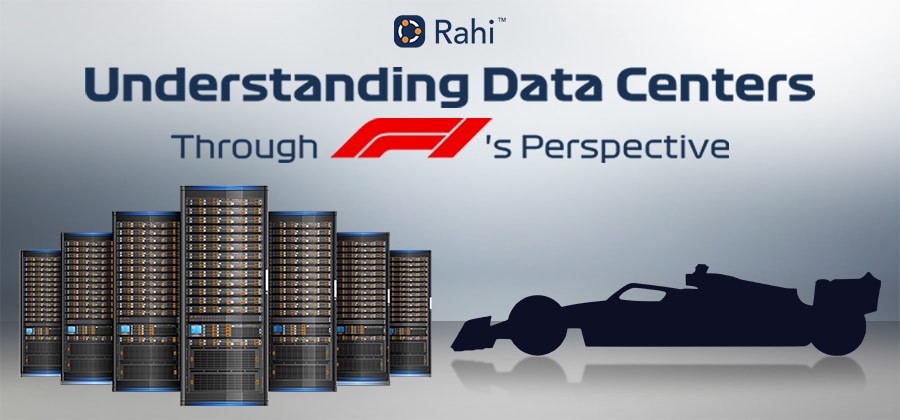
Data Centers have become an integral part of today’s economy. They empower businesses, governments, and healthcare institutions to store sensitive information. This stored data enables businesses to improve the lives of their customers, citizens and patients by being able to extract actionable insights. Yet, understanding the data center and how it works is a complex process. But, at Rahi, we think it shouldn’t have to be.
At Rahi, we always strive for high-quality work coupled with simplicity. Hence, to break down the complexity of data center architecture and make it easily digestible for everyone to understand, we have decided to put data centers through an F1 car lens.
In this blog, we will walk you through the major components of a data center and how they work by mapping the component through an F1 car. Let’s take a look at each component:
1) Engine = Servers
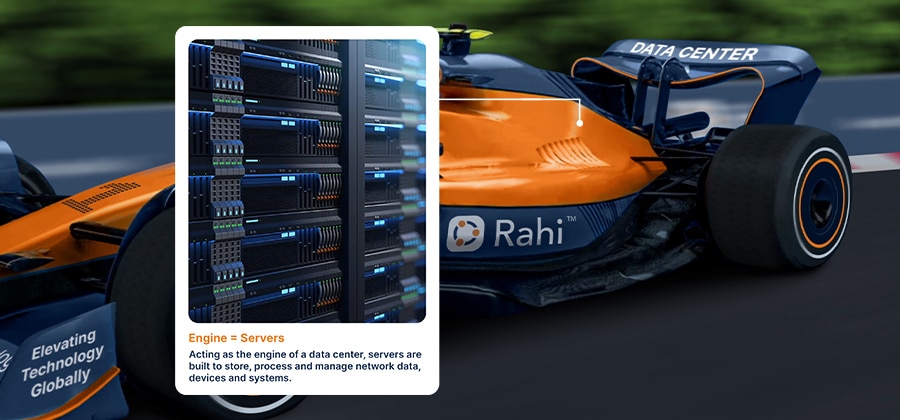
The very first component we are taking a look at is servers. Highly-powered computers, servers are built to store, process and manage network data, devices, and systems. Acting like an engine of an f1 car, servers power enterprises to offer network devices and systems with adequate resources. They provide scalability, efficiency and business continuity capabilities.
2) Halo = Security Measures
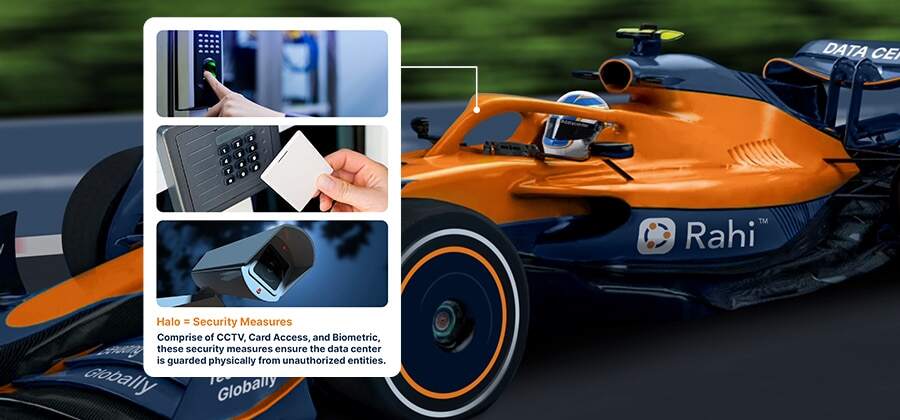
For the driver’s safety, the Halo is critical equipment that has successfully dodged some of the most horrible F1 car accidents. In the same way, the physical components within a data center such as CCTV, Card and Biometric access ensure the data center is physically protected from unauthorized entities. These along with necessary cybersecurity measures ensure that the data center and the information is protected from malicious threat actors.
3) Fuel Tank = Power Generator & UPS

A fuel tank provides the necessary energy for the whole F1 car to work. Similarly, the data center facility comprises power generators and an uninterruptible power supply that ensures all the equipment within the data center receives a consistent power supply.
4) Steering wheel = IP KVM over Switches
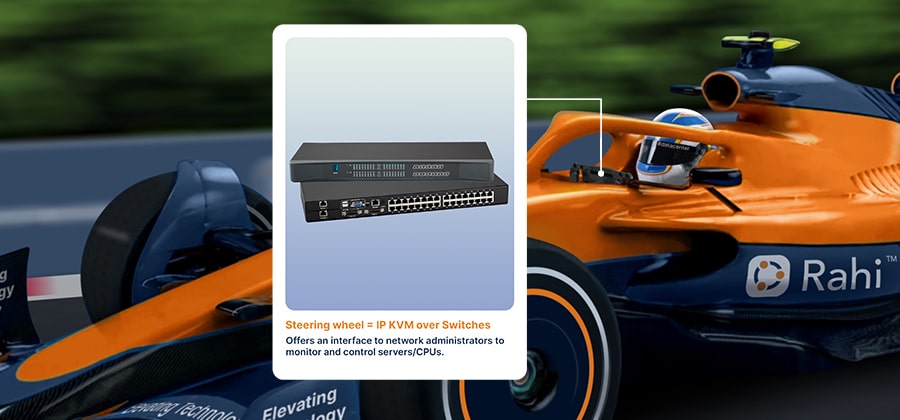
Similar to the f1 car’s steering wheel that provides control to the driver, the KVM over IP switch acts as an interface between the data center administrator and the data center. It empowers the network administrator to remotely monitor and control servers/CPUs.
5) Inlet = Cooling Solutions
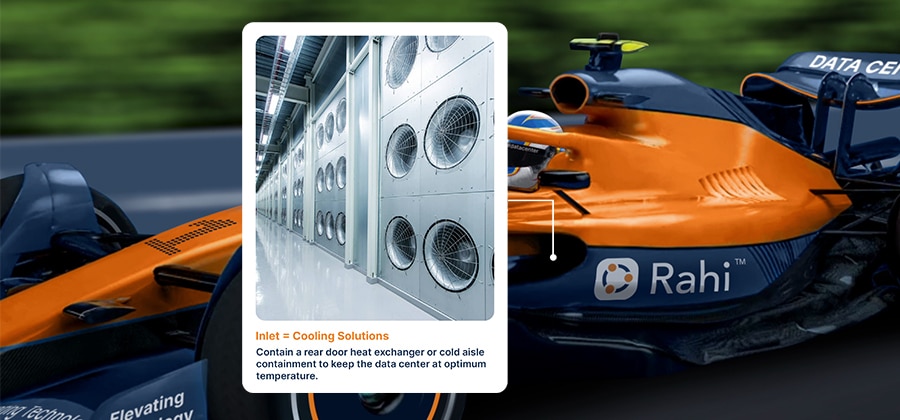
F1 cars often heat up to very high temperatures. In fact, the temperature of the f1 engine can heat up to 2600 degrees Fahrenheit with the cockpit reaching up to 122 degrees Fahrenheit. If the temperature is too hot the drivers are not able to perform at their peak. Hence it is critical to keep the overall car temperature at optimum.
Similar to that, keeping the data center operational requires it to be kept cool at all times. Just as the F1 car’s liquid cooling solution to maintain the temperature of the powertrain, the cold aisle containment keeps the data center cool and at an optimal temperature.
6) Louvers = Hot Aisle
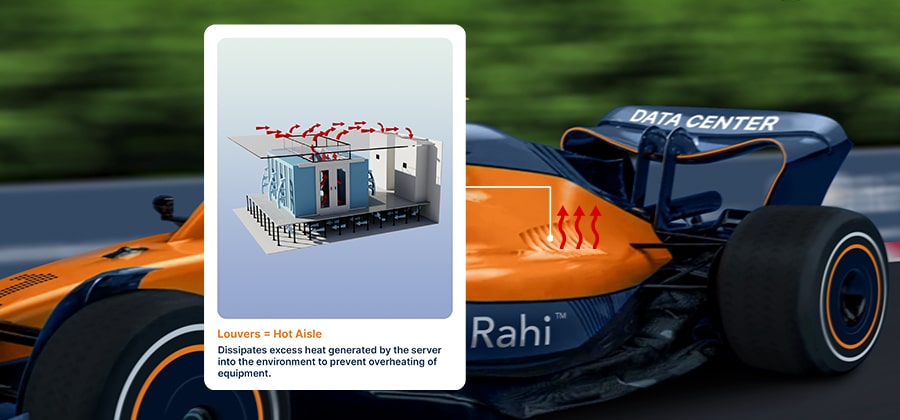
The side-pods often consist of tiny to medium-sized holes for the radiators to remove excess heat from the engine into the environment. In the same manner, data centers have a hot aisle that vents out the hot air generated by servers.
7) Car Body = Rack
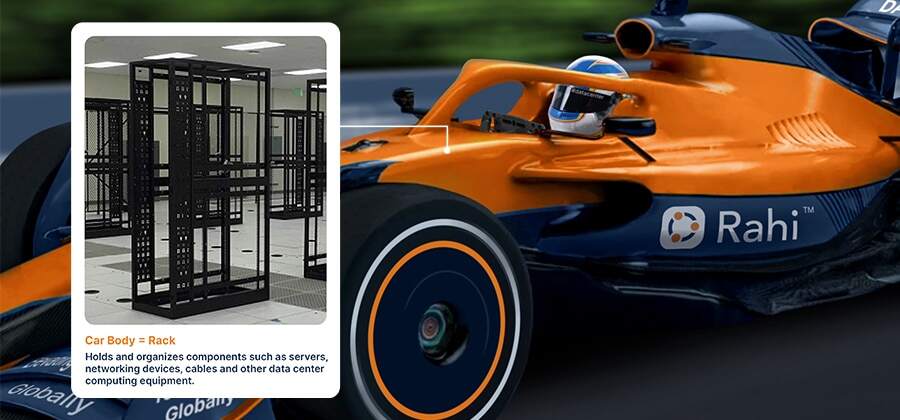
The car body of the f1 car houses all the critical components such as engines, hydraulics, radiators, front and back wings and more. In a data center, this role is taken up by the rack, which is a physical infrastructure that houses all the necessary electronic frameworks designed to house servers, networking devices, cables, and more. This physical infrastructure provides equipment placement and orchestration within a data center facility.
8) Driver = Data Center Administrator

As drivers are responsible for handling and driving the car faster and getting points and win for their constructors, the data center administrators (DCA) are responsible for overseeing the data center operations and ensuring they continue to operate at higher uptime.
As they oversee this business-critical system, they should have in-depth knowledge about everything that takes place within a data center. DCAs take care of and monitor infrastructure design, operations, and lifecycle management for physical and data center assets.
9) Gearbox = Automatic Transfer Switch (ATS)
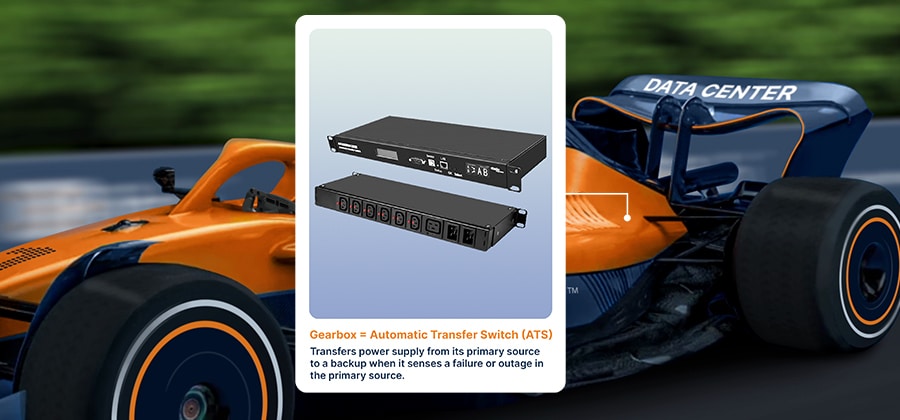
Gear changes in an F1 car are hugely different from a normal sedan. Their robust nature allows drivers to change them at higher RPMs without any glitch or disruption to the system.
In the same manner, the Automatic Transfer Switch (ATS) is responsible for switching the electricity from main power to secondary source to avoid any kind of disruption to the data center facility.
10) Sensors = Environmental Monitoring Solutions

F1 cars have over 200 sensors monitoring the car’s performance and efficiency during the entirety of the race. Similarly, a data center comprises environment monitoring solutions that observe temperature, humidity, and other conditions within the data center. This ensures that equipment is operating safely and efficiently.
Checkered Flag🏁
Formula 1, though is all about a driver driving the car for a win, in the end, is a team sport. A team of passionate and expert individuals with innovative ideas, pushing themselves to build the next best thing. Building a data center is no different.
It requires the expertise and passion of people, driven to build the most highly efficient and performance data center. Rahi, being in this industry for more than a decade, has gained the expertise to build the most advanced and efficient data centers in the world. With a presence in 40+ countries, across six continents, we have empowered our customers to focus on their core objectives while we build and take care of their data centers.
If you want to partner with a team of passionate data center professionals to build the next-generation highly efficient and high-performance data center, please get in touch with us.

Let our experts design, develop, deploy and manage your requirements while you focus on what's important for your business